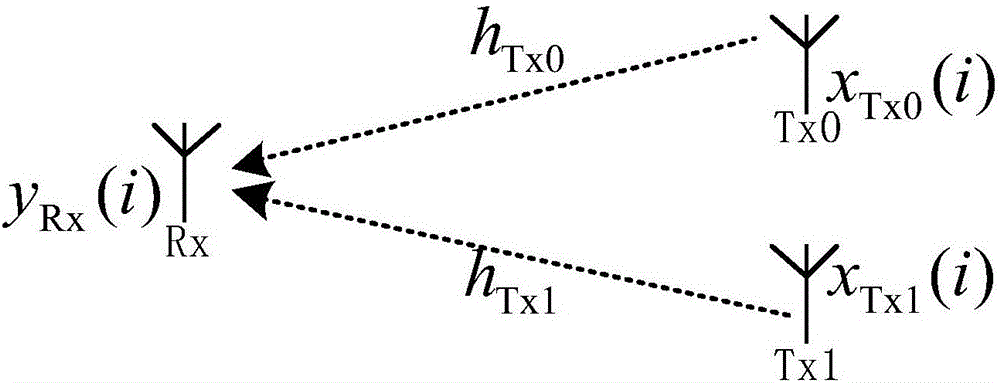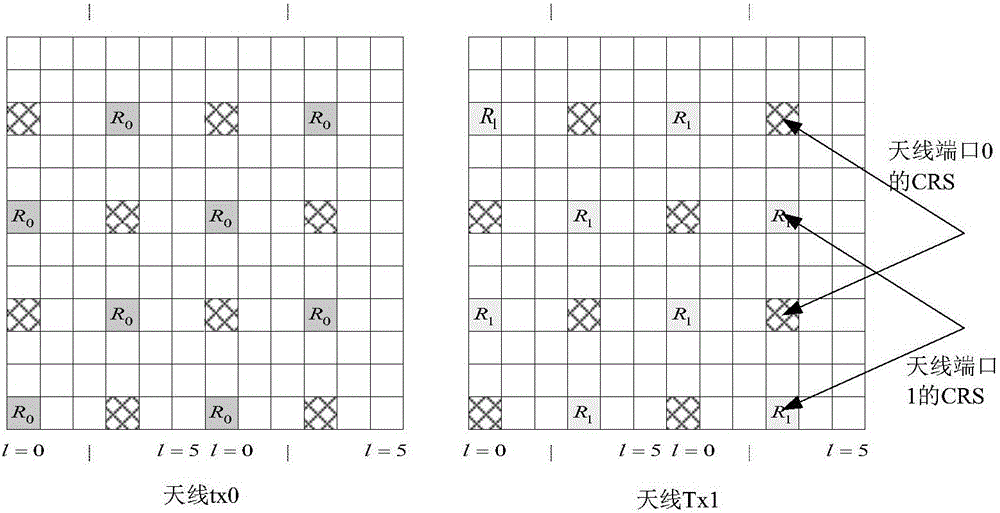Hard decision method using single antenna to solve double antenna space division multiplexing
A space-division multiplexing and single-antenna technology, applied in the field of hard judgment, can solve the problem that a single receiving link cannot decode dual-antenna space-division multiplexing, and achieve the effect of less calculation
- Summary
- Abstract
- Description
- Claims
- Application Information
AI Technical Summary
Problems solved by technology
Method used
Image
Examples
Embodiment 1
[0046] This embodiment discloses a hard decision method for demultiplexing dual-antenna space division multiplexing using a single antenna, which specifically includes:
[0047] S1, channel estimation step;
[0048] S2, a step of generating a reference constellation diagram;
[0049] S3, hard bit generating step;
[0050] S4. Turbo decoding step.
[0051] In the channel estimation step, use the single-antenna receiving data to perform channel estimation on the two transmitting antennas according to the CRS of the two transmitting ports, and the channel estimation values are h Tx0 and h Tx1 , respectively represent the channel estimation of the receiving antenna Rx to the transmitting antenna Tx0, and the channel estimation of the receiving antenna Rx to the transmitting antenna Tx1, and the channel estimation relationship is as follows figure 2 shown.
[0052] These two channel estimates h Tx0 and h Tx1 , are all calculated from the LTE cell reference signal (Cell Re...
Embodiment 2
[0070] This embodiment discloses a hard decision method using a single antenna to solve dual-antenna space division multiplexing, such as Image 6 shown, including:
[0071] Step T1. Obtain air interface data, sample and filter the data at the frequency of the signal through the front-end receiver, and obtain the LTE downlink data received by the single antenna to be processed.
[0072] In step T2 and step T3, extract CRS signals for channel estimation of the two transmit antennas TX0 and TX1 according to the specific RB and symbol positions of TX port 0 and TX port 1 in the received LTE downlink data.
[0073]Step T4 and step T5, the channel estimation step, use the single-antenna received data to channel the two transmit antennas according to the CRS of the two transmit ports.
[0074] Step T7 is a step of generating a reference constellation diagram, based on the channel estimation generated in step T4 and step T5 and the ideal constellation diagram of the current modulati...
PUM
 Login to View More
Login to View More Abstract
Description
Claims
Application Information
 Login to View More
Login to View More - R&D
- Intellectual Property
- Life Sciences
- Materials
- Tech Scout
- Unparalleled Data Quality
- Higher Quality Content
- 60% Fewer Hallucinations
Browse by: Latest US Patents, China's latest patents, Technical Efficacy Thesaurus, Application Domain, Technology Topic, Popular Technical Reports.
© 2025 PatSnap. All rights reserved.Legal|Privacy policy|Modern Slavery Act Transparency Statement|Sitemap|About US| Contact US: help@patsnap.com



